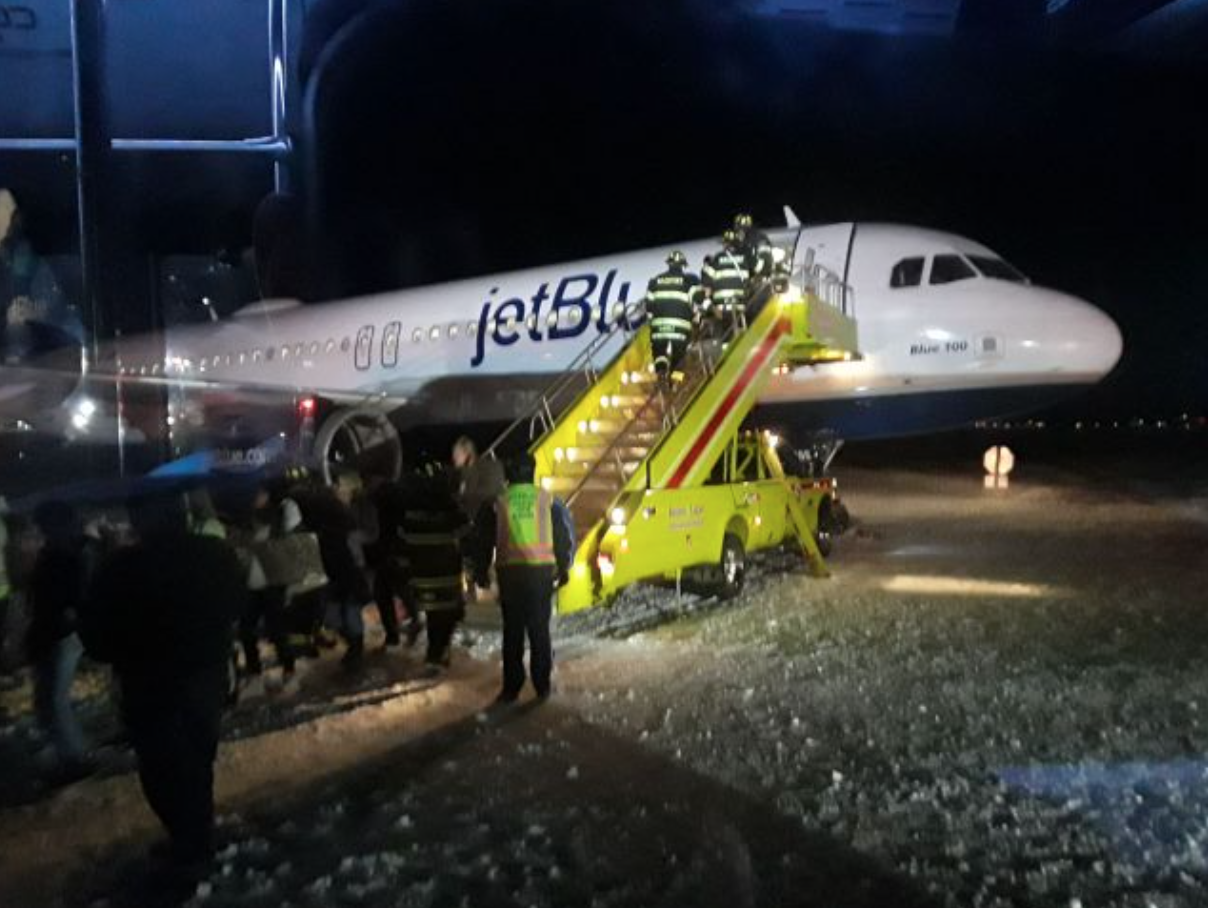The JetBlue flight 50 accident at Boston Airport on Monday 25th December 2017 was a reminder of just how close to disaster it can be when a modern airplane encounters a problem during flight or on the runway.
The JetBlue accident fortunately had no serious consequences. No-one was injured or killed when the plane landed at Boston’s Logan Airport in the dark on the evening of Christmas Day. The plane reportedly hit a patch of ice on the runway and slid off the taxiway, spinning as it did so and ending up half way between two runways facing the opposite way round. The plane had landed after a flight from Savannah, Georgia.
Passengers were not surprisingly pretty worried as the plane slid out of control at first, but ended up relieved when it came to a stop.
Apparently three inches of ice had fallen on the runway as it had done all over the city that day, but the airport was kept open.
Is air travel any safer today?
Some people remain very anxious about air travel, even to the point of never traveling at all if the only way is by plane. How dangerous is air travel in 2018 compared to other forms of transport? Is fear of flying justified? Are news reports of accidents like the JetBlue one proof that air travel is intrinsically dangerous?
Statistics compiled by the Dutch organization, the Aviation Safety Network (ASN) indicate that air travel is actually safer today than it has ever been, despite a number of high profile crashes. They calculate that in 2016, the latest year figures are available, that the fatality rate was 1 fatality per 3.1 million flights, making it safer than any other form of transport.
However, according to AirlineRatings.com, which lists the safest airlines each year based on accidents reported, not every airline is equally safe. Of the top 20 safest airlines, according to their data, four are U.S. based: Alaska Airlines, Delta, Hawaiian and United. Perhaps predictably, airlines based in third world nations like Indonesia and Afghanistan do not have such a good safety record.
Airline crashes are always big news
When an airplane does crash, it is usually big news. That’s because there are so many potential injuries and fatalities. Extreme winter weather should make airlines and air traffic controllers particularly careful. Memories of the fate of Air Florida Flight 90 on Wednesday, January 13th 1982, when the Boeing 737 fully laden with passengers and bound for Tampa, Florida, crashed into the icy Potomac River after take-off from Washington D.C., are probably rekindled every time an accident happens in winter.
The Air Florida disaster, which resulted in 74 of the 79 passengers and crew perishing in the Potomac, was blamed primarily on pilot error after the investigation was carried out.
Despite the fact that air travel is safer today than it has ever been accidents still happen, even to airlines that have had a good record in the past. The term “accident” is a bit of a misnomer, because behind every accident there is a cause. Airline accidents in the U.S., even ones like the Christmas Day JetBlue skid, are always investigated. Eventually, the reasons for the crash are found. Rarely can they be blamed entirely on freak weather events. Airline accidents may be due to pilot error, as was the case with the Air Florida disaster, poor maintenance, mistakes made by air controllers and defective aircraft components, to mention some of the more common reasons for a crash.
Aircraft crashes can cause horrific injuries and fatalities. Anyone who is injured by an aircraft accident, or is a surviving family member of an aircraft crash victim has the right to seek compensation with the help of an experienced aviation accident attorney against whoever was at fault.


Leave A Comment